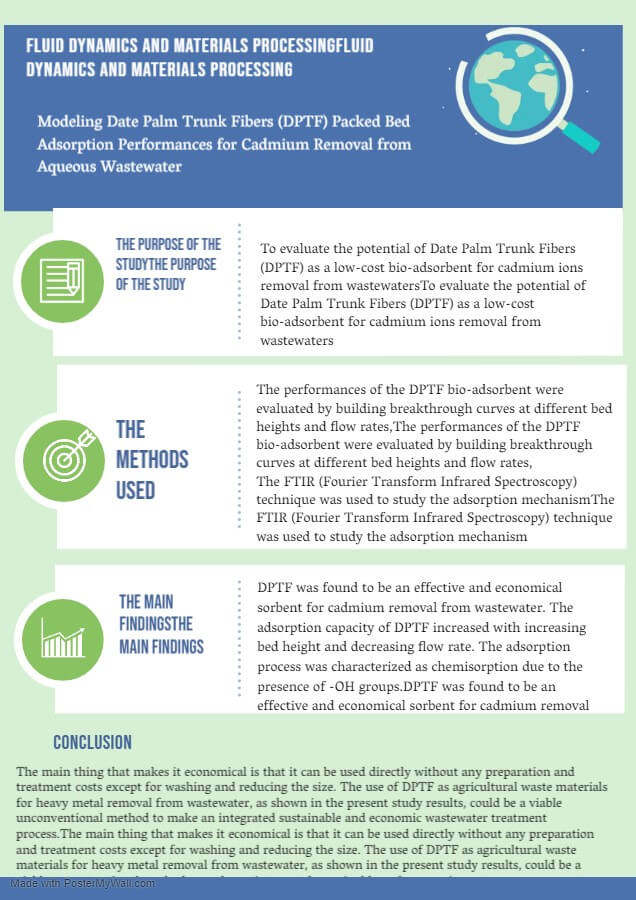 Open Access
Open Access
ARTICLE
Modeling Date Palm Trunk Fibers (DPTF) Packed Bed Adsorption Performances for Cadmium Removal from Aqueous Wastewater
1
Mechanical Engineering Department, Faculty of Engineering Technology, Al-Balqa Applied University, Amman, 11134, Jordan
2
Chemical Engineering Department, Faculty of Engineering Technology, Al-Balqa Applied University, Amman, 11134, Jordan
* Corresponding Authors: Ahmad S. Awad. Emails: ;
Fluid Dynamics & Materials Processing 2023, 19(6), 1535-1549. https://doi.org/10.32604/fdmp.2023.024300
Received 25 May 2022; Accepted 09 August 2022; Issue published 30 January 2023
Abstract
In this study, the potential of a low-cost bio-adsorbent, taken directly from Date Palm Trunk Fibers (DPTF) agricultural wastes, for cadmium ions removal from wastewaters is examined. The performances of this adsorbent are evaluated by building breakthrough curves at different bed heights and flow rates while keeping other parameters, such as the initial feed concentration, pH, and particle size, constant. The results indicate that the maximum cadmium adsorption capacity of DTPF can be obtained from the Thomas model as 51.5 mg/g with the most extended mass transfer zone of 83 min at the lowest flow rate at 5 ml/min. The saturation concentrations (NO) and the rate constant (kab) obtained from the BDST (bed depth service time) model are 7022.16 mg/l and 0.0536 l/mg.min, respectively. Using the Yon-Nelsen Model, it is found that operating at a lower flow rate leads to a larger value of the elapsed needed time to reach a 50% breakthrough. The Wolborska model indicates that the bed capacity increases with decreasing the flow rate, and the adsorbent can achieve a greater external mass transfer kinetic coefficient (2.271/min) at a higher flow rate.Graphic Abstract

Keywords
Cite This Article
 Copyright © 2023 The Author(s). Published by Tech Science Press.
Copyright © 2023 The Author(s). Published by Tech Science Press.This work is licensed under a Creative Commons Attribution 4.0 International License , which permits unrestricted use, distribution, and reproduction in any medium, provided the original work is properly cited.


 Submit a Paper
Submit a Paper Propose a Special lssue
Propose a Special lssue View Full Text
View Full Text Download PDF
Download PDF Downloads
Downloads
 Citation Tools
Citation Tools